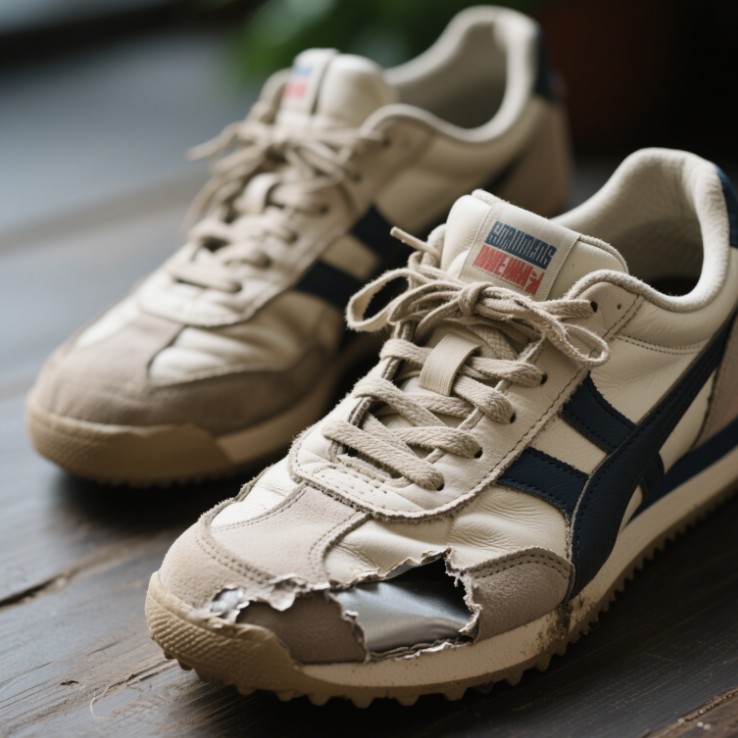When Soles Let Go: The Forgotten Truth About Old Sneakers
It was the first warm Saturday of spring when Mason decided to finally wear them.
He’d waited nearly two years for the right moment, ever since he managed to grab a deadstock pair of his all-time favorite basketball sneakers—an iconic release from almost a decade ago. Still sealed in the box, tissue paper untouched, the shoes felt more like sacred artifacts than something you’d actually wear. But that day, with the sun out and his outfit on point, Mason couldn’t resist. He laced them up, adjusted his hoodie, and stepped out with the strut of someone who knew heads would turn.
And heads did turn. Until he heard a soft snap.
It happened sometime around his third block. A strange sensation under his heel, then a subtle crunching sound. He looked down and his stomach dropped. The midsole had started to peel away. Just a little at first. But by the time he got to the coffee shop, the entire sole was half-detached, hanging on with the energy of a tired promise.
The shoes were falling apart.
He spent the next twenty minutes Googling with a cappuccino in one hand and heartbreak in the other. The search results confirmed what he hadn’t wanted to believe: sneakers, no matter how rare or expensive, have a shelf life.
Mason had always thought of shoes like collectibles—something you could keep in pristine condition if you just avoided wear. But what no one told him was that time itself is a silent destroyer. The glue that bonds the sole to the upper begins to degrade long before the shoe even touches the pavement. Humidity, temperature shifts, even the chemical aging of the materials—these invisible forces work slowly, until one day, your grail pair literally falls apart at your feet.
He wasn’t alone. Digging deeper, Mason found story after story from other sneaker lovers. Perfectly preserved Jordans, rare Air Maxes, vintage adidas—pairs that had been lovingly boxed and stored, only to crumble at first wear. Some even disintegrated mid-game or during a photoshoot. It didn’t matter how expensive or exclusive they were. If they weren’t maintained properly, time always won.
The realization was painful, but it shifted something in him.
He began to see shoes not just as artifacts, but as objects meant to live. That glue wasn’t just physical—it was symbolic. It held together the memories you make with each wear. And when sneakers sit unworn, unbreathed, untouched—they start to forget what they were made for.
After that day, Mason changed his habits. He stopped hoarding pairs for “someday” and started rotating through his collection more often. He learned about storing shoes properly—away from direct sunlight, in breathable spaces, with silica packs to fight moisture. He even learned how to reinforce aging midsoles before they turned brittle. Not out of fear, but out of respect.
Because what’s the point of a beautiful shoe that never gets to walk?

Old sneakers aren’t just vulnerable because of their age—they’re victims of stillness. Left unused, the very materials meant to support you begin to break down. If you love your shoes, wear them. Let them carry you through moments, not just memories. Because the risk of opening a box only to find heartbreak inside? That’s far worse than a scuff.
